I recently had a day out on the North Norfolk Railway (NNR) which runs from Sheringham via Weybourne to Holt. The day was a father’s day outing paid for by my son Andrew and his wife Joy.
We got there by way of ‘East Midland Trains’ from Nottingham to Norwich and then by ‘abellio-greateranglia’ to Sheringham.
Its pleasing to see that the NNR uses the ‘British Railways’ signage from the 1950’s which is entirely in keeping with a ‘Heritage Railway’.
There is a direct link with the rest of the railway network to the East. Beyond the level crossing is the start of the line that runs through to Norwich.
While to the West the line runs parallel to the coast as far as Weybourne and then swings slightly inland to terminate at Holt.
The ‘NNR’ is what remains of the ‘Midland & Great Northern Joint Railway’ (M&GNR) which prior to largely being axed in the 1960’s served a wide network across North Norfolk.
From the grouping of 1923 the ‘M&GNR’ which itself was an amalgamation of many smaller lines dating from 1893 became part of the LNER. Today the major rolling stock on the line reflect that companies ownership.
There were two loco’s in steam on the day. Resplendent in LNER Apple Green was No. 8572. A B12 class loco built in 1928 to an earlier Great Eastern Railway design.
and British Railways (BR) No. 44767 George Stephenson. An LMS Stanier ‘Black Five’ which is unique in that it was the only one in a class of 842 locomotives built to be fitted with the ‘Stephenson’ type of valve gear.
It’s other claim to fame being that it was completed on the 31st of December 1947 so being the last loco to be finished for the LMS and on the following day, the LMS became part of ‘BR’.
The main purpose of the visit was to see and ride on the Gresley ‘Quad-art’ coaching stock that is the jewel in the ‘NNR’s crown.
I first saw this at Weybourne 40 years ago when it was in a run down condition. At that time I seriously doubted that it would ever run again. Now and half a million pounds later, it looks magnificent.
The ‘Quadruple-Articulated’ principle was the work of Nigel Gresley (before he became Sir) when he was the Great Northern Railway’s (GNR) Carriage and Wagon Superintendent.
Initially converted from older coaches and then as new build stock they were an exercise in reducing cost. ie Five bogies in four coaches instead of eight.
As a consequence it reduced the weight and also kept the overall length to reasonable proportions for use in some of the more cramped stations such as Moorgate.
The articulated principle is still in use today. The Eurostar trains being prime examples.
The set now on the NNR were built as set No. 74 in 1924 by the LNER. Continuing in service with ‘BR’ it was withdrawn in 1966.
Initially destined to be scrapped, it was stored and eventually came to the ‘NNR’ where it became the lines early coaching stock.
Withdrawn again in 1979 because of its poor condition, it was stored for over 20 years before it was decided to restore it. The restoration which was undertaken at Carnforth starting in 2003 took five years to complete.
As well as the exterior, the interior was restored to the same standard.
The full story can be read on the information boards on display in the coaches.
The NNR attracts a lot of cyclists and for carrying their cycles provides this former LNER Pigeon Van is provided.
The line leaves Sheringham and runs across the top of the cliffs with extensive seaward views to the intermediate station at Weybourne.
This is where the lines workshops and storage is located.
The view from the footbridge looking East towards Sheringham.
The view from the footbridge looking West towards Holt. The brick built station buildings to the right is faced by the timber built signal box and waiting room opposite.
The buildings are painted in a tan and cream colour scheme which matches the livery in which the M&GR loco’s were painted.
For the last service of the day, this Metro-Cammell built Class 101 DMU was substituted for the B12/Quad art train.
D5631
Formerly Class 31 207 was parked up at Weybourne. Built by Brush at Loughborough in 1960 and withdrawn in 2001. Owned by the M&GNR Society who have chosen to paint the loco in the livery it wore when first built.
As was Class 37 D6732 formerly 37032. Built by English Electric at Newton-le-Willows in 1962.
Holt is the end of the line where there is the usual run round loop together with a small goods shed.
Parked at Holt is a small selection of wagons of which No. 12, a tool and brake van is probably the pick. Built by the M&GNR, it has been splendidly restored.
Another original is this van built for the mustard traffic which is grown widely in Norfolk.
Sandwiched between the two is this ‘ESSO’ tanker.
Another link with the past is the signal seen here on the right located at Holt being of the Great Northern Railway ‘somersault’ type.
On the second train in service the cycles are accommodated in this former British Railways Covered Carriage Truck.
The obligatory Class 08 shunter at Sheringham is D3940 (which was formerly 08772). Built at Derby in 1960 and withdrawn in 1994.

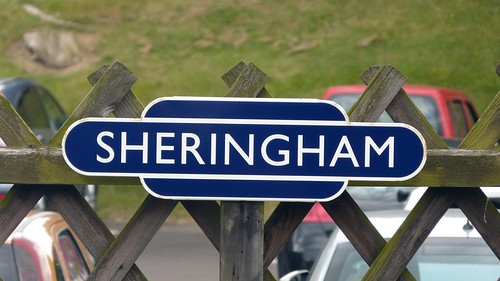
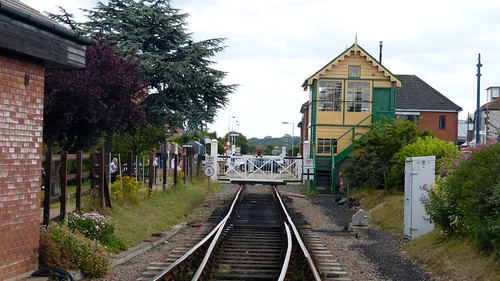
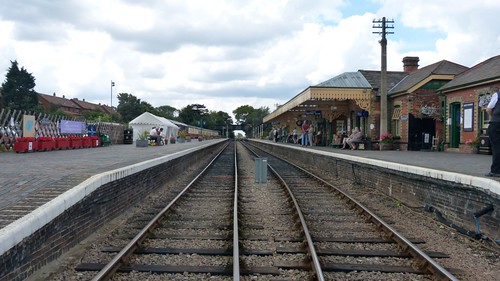
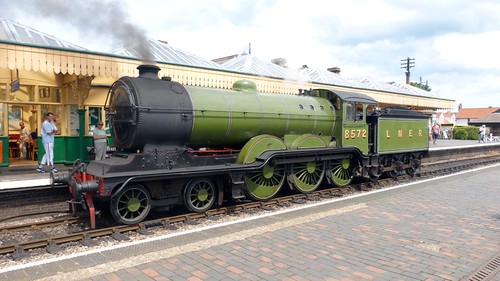
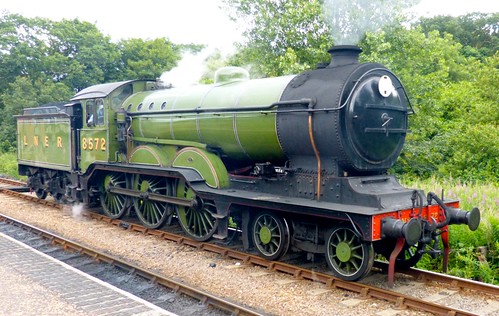
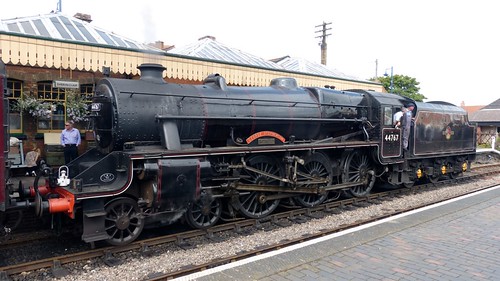

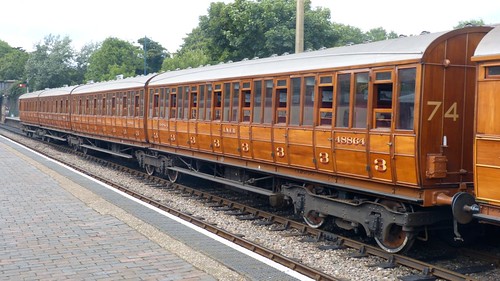
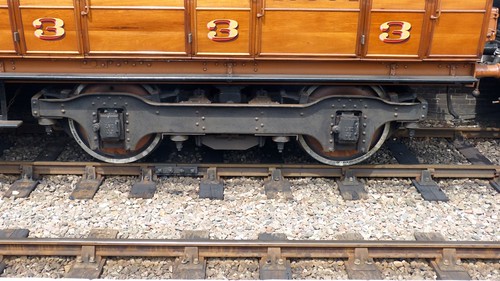
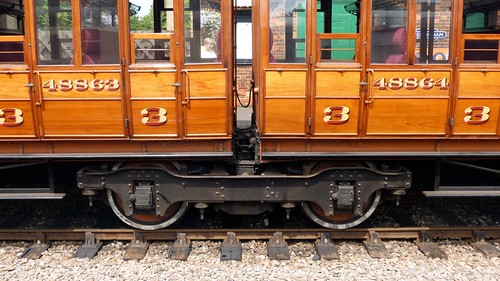
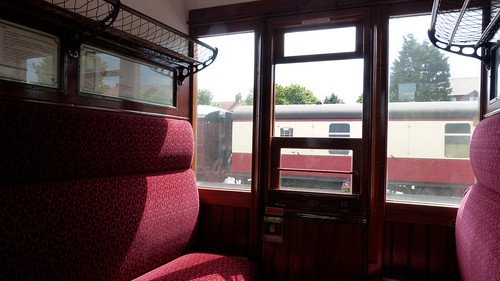
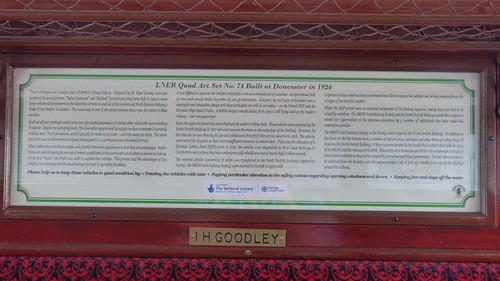

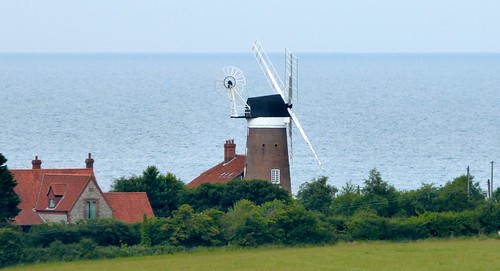
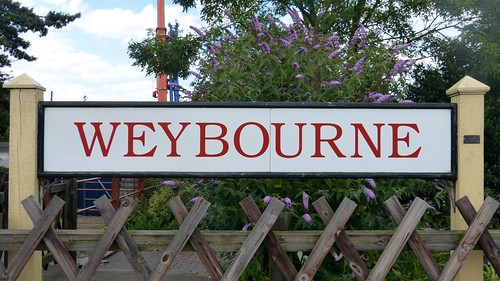
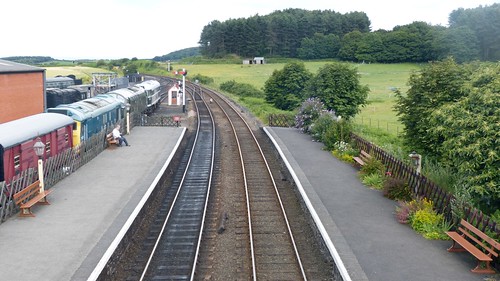
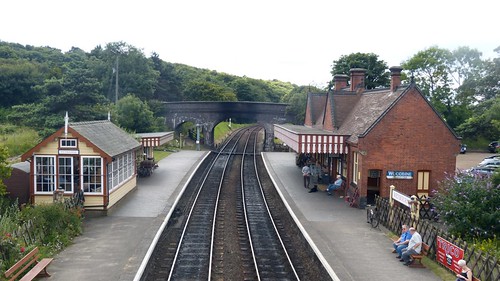
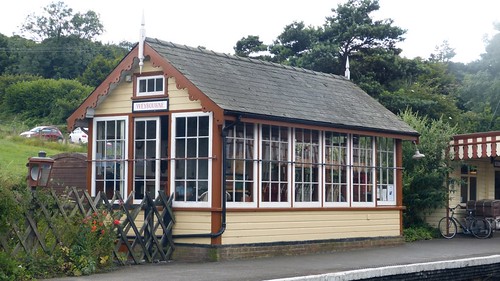
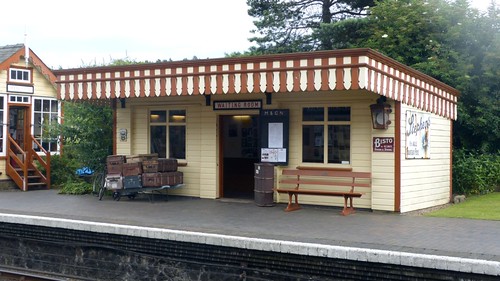
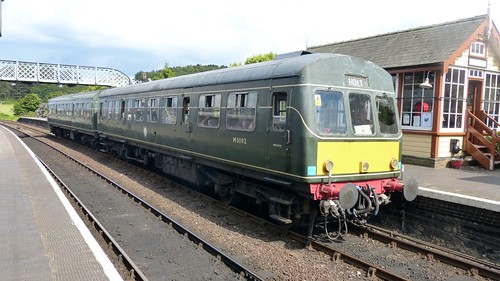
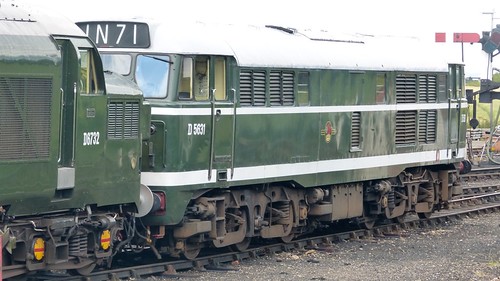
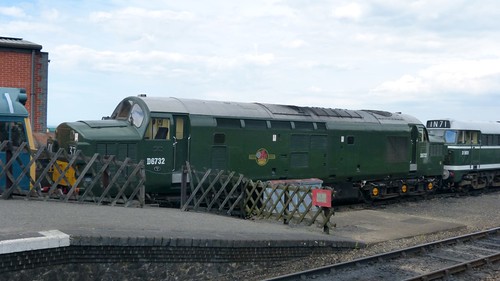
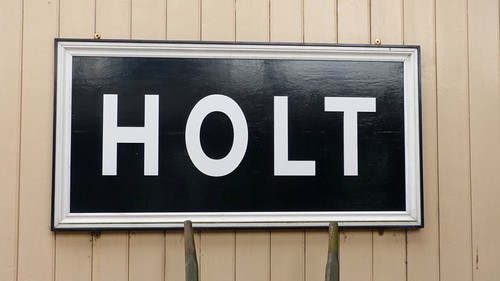
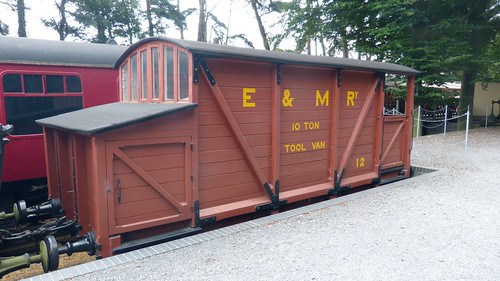
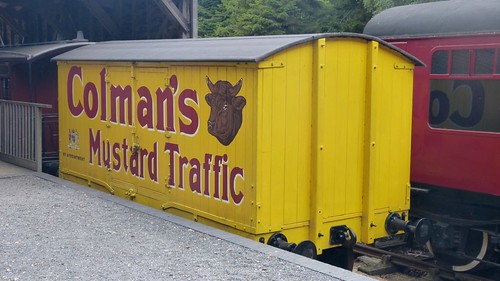
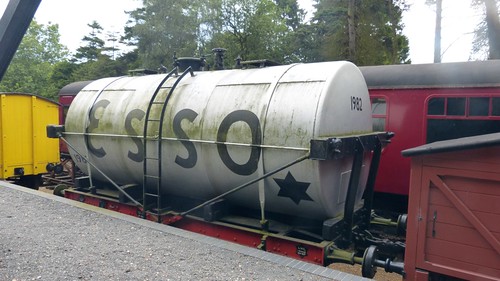
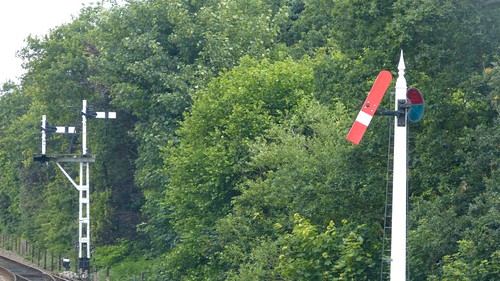

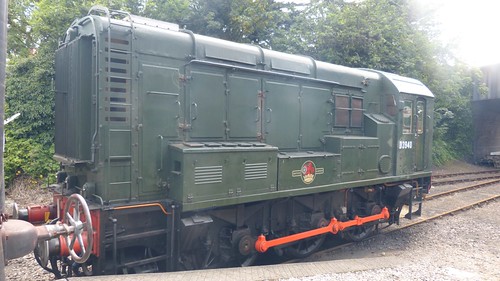
No comments:
Post a Comment